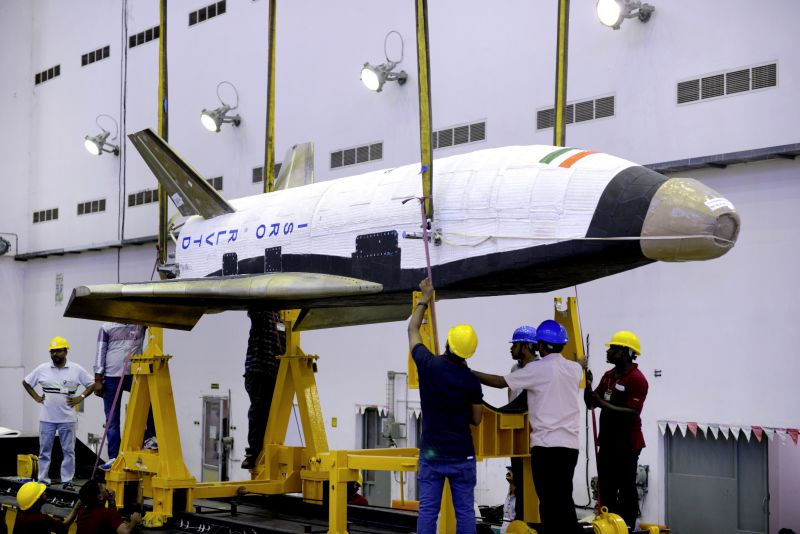If humanity hopes to conquer space, we first need a cheaper way to escape Earth. US-based companies SpaceX and Blue Origin have so far led this charge by creating reusable rocket boosters that can land themselves safely back on Earth before getting cleaned up and launched again, but rockets aren't the only reusable we need.
That's why it's exciting to hear that India has just launched and retrieved a mini space shuttle for the first time. NASA's Space Shuttle programme might have ended in 2011, but India is hoping to use similar technology to create a reusable shuttle to take astronauts, supplies, and whatever else we might need into orbit. Here's what we know about it so far.
According to a BBC report, Indian officials launched a 7-metre-long shuttle from Sriharikota in Andhra Pradesh on 23 May 2016. The shuttle, which looks more like a piñata than the famed Endeavour, weighed in at 1.75 tonnes, and successfully landed in the Bay of Bengal, 450 km (280 miles) from where it launched 13 minutes earlier.
The Indian Space Research Organisation (ISRO) reports on the success of the launch and land of its RLV-TD shuttle, which is short for India's Reusable Launch Vehicle-Technology Demonstrator:
"From that peak altitude of 65 km, RLV-TD began its descent followed by atmospheric re-entry at around Mach 5 (five times the speed of sound). … After successfully surviving a high temperatures of re-entry with the help of its Thermal Protection System (TPS), RLV-TD successfully glided down to the defined landing spot over Bay of Bengal, at a distance of about 450 km from Sriharikota, thereby fulfilling its mission objectives.
The vehicle was successfully tracked during its flight from ground stations at Sriharikota and a shipborne terminal. Total flight duration from launch to landing of this mission of the delta winged RLV-TD, lasted for about 770 seconds."
The shuttle might have survived the launch and land, but it likely won't get another try - its mission was to be a proof-of-concept, so the ISRO could retrieve data about how to make a more sophisticated reusable shuttle in the future.
Though the team hasn't discussed how it hopes their shuttle designs will be used in the future, it would make sense for them to team up with other organisations, such as SpaceX, to gain access to reusable boosters. The goal for everyone in the spaceflight game right now is to dramatically decrease the amount of money needed to launch materials or people into space, and a collaboration like this will be key.
 Isro
Isro
It's a worthy cause, too. According to Iowa State University, it costs about $10,000 to send a single pound ($22,000 per kg) into low-Earth orbit through traditional means. This price tag is largely based on the cost of fuel and a single-use rocket. Following that logic, a reusable rocket should prove cheaper in the long run.
But that isn't to say that reusing rockets is free. According to Loren Grush in a report for The Verge, refurbishing rockets and shuttles for second launches is incredibly pricey.
For example, each Space Shuttle mission NASA performed cost somewhere between US$450 million and $1.5 billion. SpaceX CEO Elon Musk claims that a Falcon 9 rocket - the one that landed on that barge not long ago - costs roughly $60 million to make and $200,000 to fuel, which is definitely a dramatic step in the right direction, though SpaceX has yet to actually refurbish one of their rockets.
For India, the launch of their mini shuttle shows that they are ready to step in the ring and offer a new solution to the economic pitfalls of space exploration. After all, the country is known for doing things on the cheap. Last year, Isro successfully orbited Mars with a craft that cost $74 million. NASA's Maven mission, which did virtually the same thing, cost roughly $671 million.
And India isn't the only country experimenting with shuttles - the European Space Agency (ESA) has been testing one for over a year now.
It seems like we'll have to wait and see what will come of India's successful launch, though one thing is certain: the world is pulling together behind the idea of reusable spacecraft, which is definitely the direction we need to go if we want to get off this pale blue dot for real.
